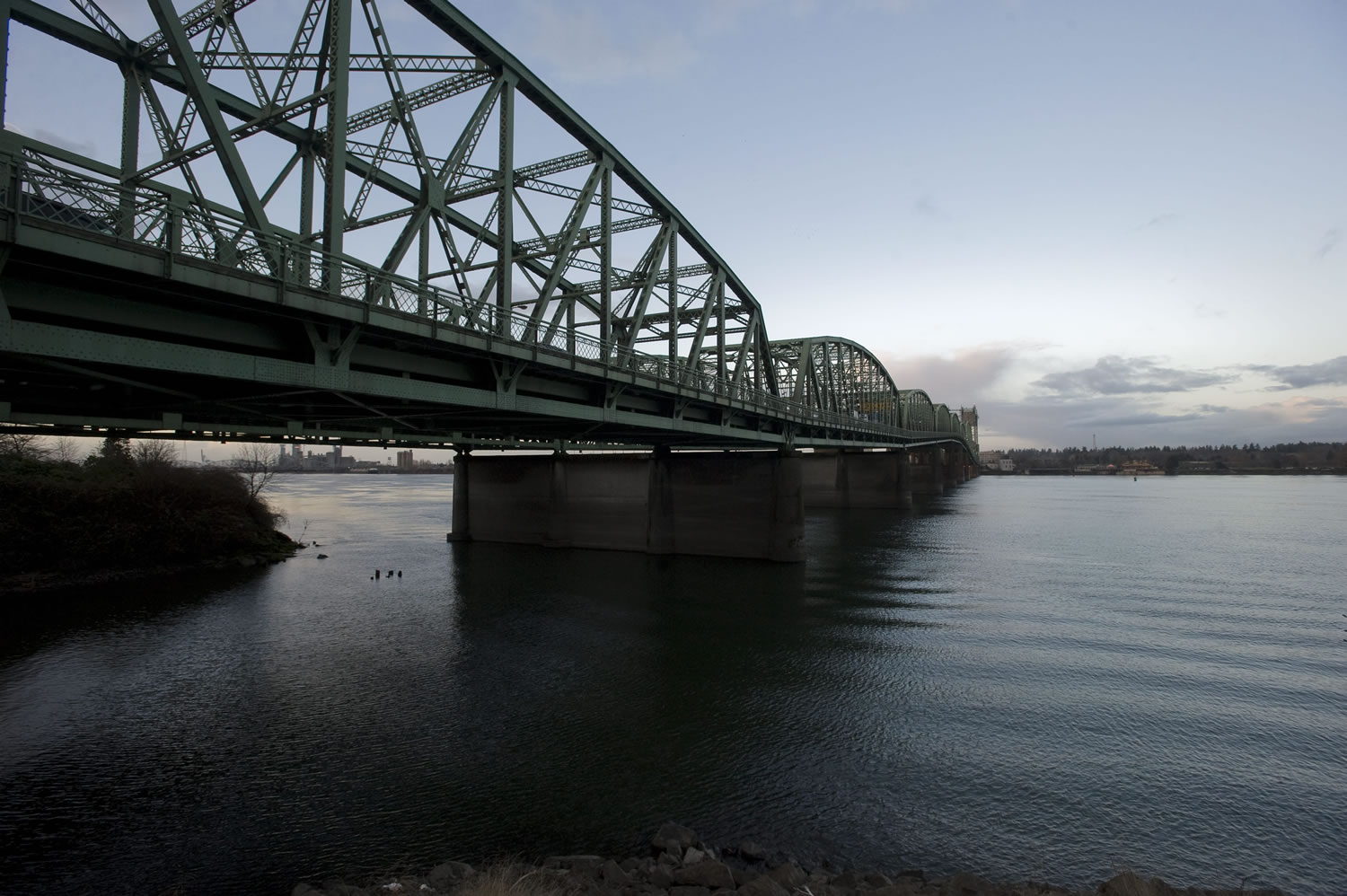Both spans of the Interstate 5 Bridge over the Columbia River are considered “fracture critical” by the Oregon Department of Transportation, meaning if one crucial part of the bridge sustains a big enough blow, the bridge could collapse.
It’s a designation the bridge shares with many bridges in both Oregon and Washington, as well as the I-5 Skagit River Bridge that collapsed Thursday evening. The Oregon Department of Transportation, which is tasked with maintaining the I-5 Bridge between Portland and Vancouver, has released a fact sheet about Oregon’s bridges following Thursday’s nonfatal bridge collapse.
In it, the I-5 Columbia River bridge is categorized as a bridge without safety redundancies or backups that would prevent it from collapsing if part of a bridge truss is damaged or removed.
“If one of the fracture-critical pieces is somehow taken out, removed or fails in some way, the whole bridge could collapse,” Oregon transportation spokesman Don Hamilton said Tuesday. He declined to specify where the bridge would need to be damaged in order to collapse, because he didn’t want to make the bridge’s weak spots public.
According to the Oregon transportation fact sheet, the I-5 Columbia River bridge could collapse if a key section of the truss fails. Trusses are a triangular grouping of beams that help distribute weight throughout a structure.
The collapse of the Skagit River I-5 bridge is still being investigated by the National Transportation Safety Board, but law enforcement officials said the bridge appeared to collapse after a tractor-trailer carrying an oversize load struck an overhead beam. The four-lane Skagit River I-5 bridge and the six-lane Columbia River I-5 Bridge are both steel through-truss designs, but it’s too soon to apply any causal information about the bridge collapse to the Columbia River bridge, Hamilton said.
“As far as any direct comparison, it’s a little early in the process to know exactly what happened,” he said. “We’re watching the investigation very carefully, and we are going to want to know if there are any parallels that can be drawn.”
The Skagit River Bridge, built in 1955, measures 14 feet 6 inches from road surface to the lowest beam. The northbound span of the Interstate 5 Bridge, built in 1917, has a clearance of 15 feet 6 inches while the southbound span, built in 1958, has a clearance of 15 feet 8 inches.
Bridge still safe
Although both spans of the I-5 Columbia River bridge are fracture critical, they are not considered “structurally deficient,” a label given to 89 Oregon bridges that require truck weight restrictions because a crucial part of the bridge is in poor condition. The Skagit River Bridge also was not considered structurally deficient, a Washington State Department of Transportation spokesman said Tuesday.
Even a structurally deficient bridge is considered safe for most loads to cross. Any bridge deemed unsafe is closed, Hamilton said.
The I-5 Columbia River bridge “remains a pretty robust bridge,” Hamilton said, but “it has some obvious safety and seismic issues related to it.”
For example, the lanes on the northbound span are 10 feet wide instead of the standard 12 feet, and the spans don’t have adequate shoulders that allow vehicles to pull over.
Hamilton added that the bridge would be “very vulnerable” to even a moderate earthquake, and it will likely collapse in the 9.0 Cascadia subduction zone earthquake expected to occur within the next 200 years. The I-5 Bridge is built on wooden pilings that are embedded in the riverbed’s soil, but they do not extend into the sturdier bedrock under that soil, he said.
By comparison, the Glenn Jackson Bridge over the Columbia River on Interstate 205 is expected to be damaged, but not necessarily collapse, during a 9.0 Cascadia quake, Hamilton said.
Oregon bridges are inspected every two years, and the I-5 Columbia River bridge received its last inspection late last summer, Hamilton said. The bridge also undergoes regular maintenance work, including a session scheduled for Thursday night.
Any big rigs carrying loads that are wider, taller or heavier than usual over the bridge must go through a permitting process in Oregon and Washington. Oregon reviews thousands of permit requests each year, and many of those trucks cross the Columbia River on I-5, Hamilton said.
“It’s Interstate 5,” he said. “This is the busiest road on the West Coast and it is the primary freight highway.”
The Columbia River I-5 Bridge carries 42 percent more freight trucks than the Glenn Jackson Bridge, according to a white paper put together by the Port of Vancouver. Each year, about $30.5 billion in freight gets on or off I-5 within just a few miles of the bridge.
Other I-5 bridges
Two bridges on I-5 between La Center and Woodland appear in worse condition than the Skagit River Bridge was before it collapsed.
The northbound span of the East Fork Lewis River Bridge (built in 1936) and the southbound span of the North Fork Lewis River Bridge (built in 1940) are considered fracture critical and structurally deficient, Washington State Department of Transportation spokeswoman Magan Reed said Tuesday.
Meanwhile, the southbound span of the East Fork Lewis River Bridge (built in 1969) and the northbound span of the North Fork Lewis River Bridge (built in 1968) are not considered fracture critical or structurally deficient. All but the 1969 span are steel truss bridges.
Reed said Washington state inspects its fracture critical bridges once a year. Hamilton said bridges that are deemed truly unsafe are closed to traffic.
Stevie Mathieu: 360-735-4523 or www.facebook.com/reportermathieu or www.twitter.com/col_politics or stevie.mathieu@columbian.com




